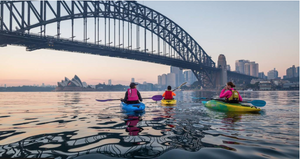Safety On the Water: Top 10 Tips For Canoeing & Kayaking Safely
Jul 31, 2019
We all love spending time out on the water, having fun, being outside and enjoying the exercise. But, like all outdoor activities, there are safety tips that we should all follow, not just for ourselves but also for the people around us. Kayaking is a sport that can be enjoyed by yourself or in a group and is surprisingly very safe whilst being open to all ability levels.
Kayaking safety is very important to understand that whilst out on the water, things can go wrong from time to time and situations can become serious very quickly, so it's worth taking onboard the points raised in this article.
Don't let that put you off though, as we are here to give you our top 10 tips to help you feel more confident whilst out paddling and give you some valuable knowledge on how to stay safe, not panic and take control of any situation that might come your way, after all, it's all about having fun!
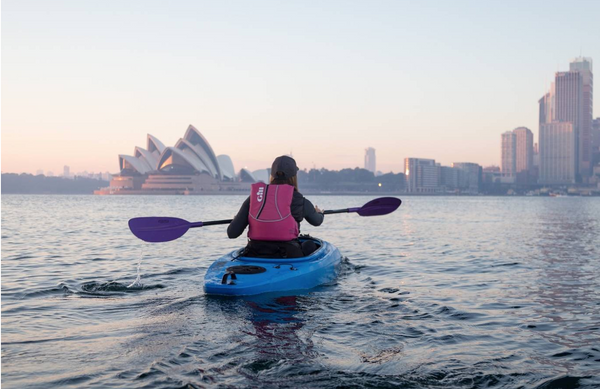
Kayaking under the iconic Sydney Harbour Bridge, with views to the Sydney Opera House.
1. Weather Conditions
Firstly and arguably one of the most important, be aware of weather conditions and water temperature. It's best to be prepared for changes in weather and the possibility of a capsizing. Planning ahead and looking at the forecast can help protect you from those times when the conditions change really rapidly and you're caught off guard. If you plan on paddling in cold water, it's worth wearing a wet suit or dry suit, designed to keep you warm and comfortable.
And, In warmer weather, a long sleeve shirt or UV protective top can offer sun protection to stop sun burn or sun stroke. It is important to check conditions such as weather and tides before going out in your kayak. Whether you are going on a expedition spanning a few days or just an afternoon paddle, being aware of current conditions can help you plan ahead so you're not caught short.
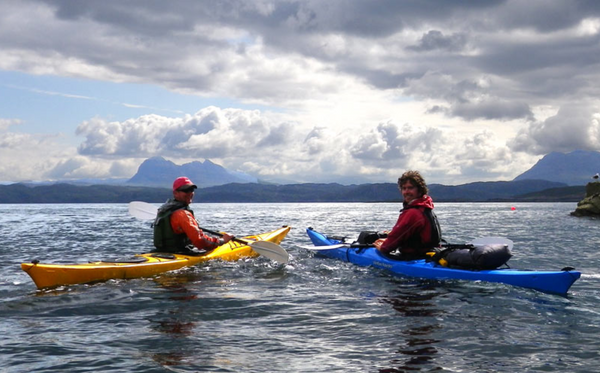
2. Kayak Life Jacket
Equally as important as the first tip, and we can't stress this point strongly enough, WEAR YOUR PERSONAL FLOATATION DEVICE OR LIFEJACKET. Depending on where you are heading, most Coast Guard regulations require that all kayaks have a lifejacket on board. Wearing your lifejacket will help keep your head above water and add insulation to your body, keeping you warmer in cold water. There are great PFDs designed specifically for paddlers. Buy one that fits well, and we suggest that you always wear it while you paddle.
Now, we all know one of the biggest reasons people take their life jacket off is because they find it uncomfortable to paddle with it on. And this is why it's worth investing in a life jacket specifically designed for kayaking and paddling because they are made to be as comfortable and unrestricting as possible when you are sitting in a kayak or paddling. The other reason why people take their life jackets off is a common misconception that they just don't look cool. Well, if it saves your life, we say they are pretty cool in the long run!
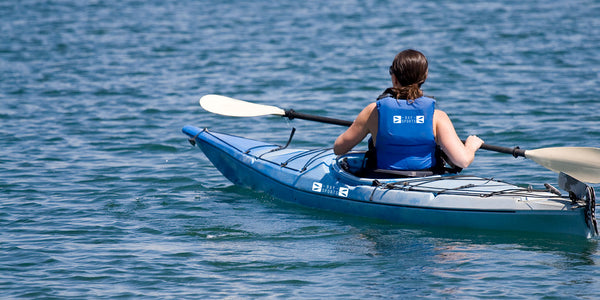
3. Dress for the Conditions
Our third rule is always dress for the conditions you are going to encounter. Along with fast changing weather conditions, cold water can be the biggest hazard because being submerged in cold water can quickly lead to hypothermia. One thing you need to think about is if you are going to be paddling in cold or cooler water, you might want to consider being a little more conservative with all your decisions.
One advantage of sit-inside kayaks is that you can shield yourself from some of the elements, while sit-on-tops leave you more exposed. Dress for the day. Think about maybe your safety, and the need to paddle in calm conditions, close to shore and never alone, like the saying goes, there's safety in numbers!

4. Know Your Skill Level
Our fourth safety tip is to choose an appropriate paddling location but also know what your skill level is and what you are capable of. The most perfect kayaking environment has protection from wind and waves, a good flat area for launching and landing, multiple places to go ashore and minimal boat traffic. It's best look for calm bays or quiet lakes and river ways without noticeable current and hazards. As your skill level improves then you can venture into heavier terrains.
As a general rule, if you head into water that is not protected from wind and waves or if you travel further from shore than you can comfortably swim, you are entering a new world - a world in which you need to protect yourself and the people you are paddling with by taking a sea kayaking course which among other things teaches you invaluable exposed water rescue skills.
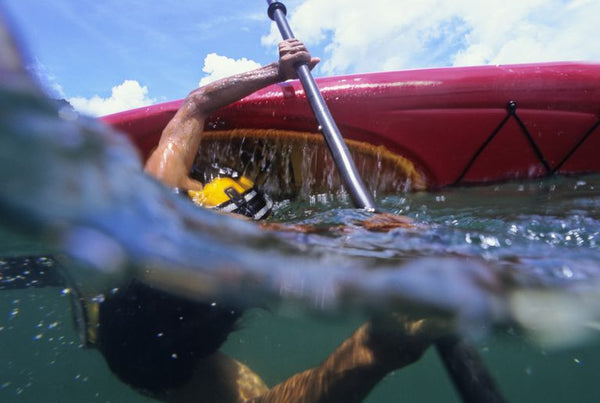
5. Be Comfortable with your Kayak & it's Ability
The fifth kayaking safety tip that we are going to look at is to practice getting in and out of your kayak from the water before you ever need to do it for real. One thing to remember is that re-entering a sit-on kayak is a lot easier than getting back into a sit-inside kayak because it won't fill with water. Emptying your sit-in kayak is quite hard work when in water, especially if you don't have a bulkhead in your kayak. All Bay Sports range of Sit In kayaks come with sealed bulkheads, keeping your compartments dry.
A bulkhead is simply a wall in the kayak to divide into separate compartments so the whole thing won't fill up if you roll. Whatever your type of kayak, if you can't confidently re-enter your kayak from the water then it only makes sense to stay close enough to shore that you can comfortably swim if you need to.
Tip: A really nifty device to carry is a kayak bilge pump. These lightweight and compact kayaking accessories can suck up 400mL of water in each pump, allowing you to remove the water from the cockpit.
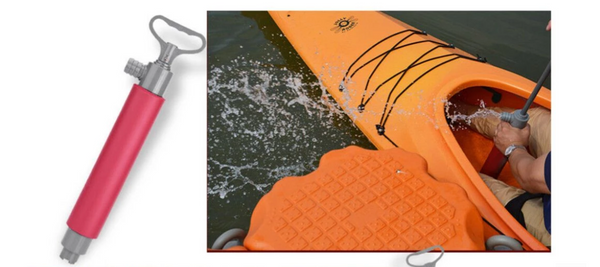
6. Tides and Currents
When paddling in areas with tides or currents, it’s important to know how strong and in which direction they’re headed. If you don't know much about currents, its best to do some research into the area you are heading to, either online or from local resources.
It can be a massive awakening if you’ve been paddling with the current for the last hour or two only to realise that you have to turn around and paddle into the current the whole way back. It might seem like a pretty obvious thing to say, but paddling with the current makes you pick up speed and almost feels effortless, where as paddling against the current can be exhausting and hard work. This really becomes an issue if it’s getting dark or you’re nearly exhausted, you get the feeling you are not moving as fast as you thought.
Remember, even a current of 2 or 3 kilometers per hour makes a big difference when you’re paddling against it. If you’re paddling a river, it’s important to know how the river is flowing. A placid river can turn into fast-moving white water if there is extra water due to heavy rain or snowmelt further upstream.
7. Plan Your Safety Equipment
Depending on the size of your trip, you will definitely want to look into carrying various amounts of safety gear with you. Obviously having a fun mess around paddle on a Sunday afternoon with some friends might not warrant the same amount of safety gear as a 2 day trek. But, it's always better to be prepared. We could go into a list of all the safety gear that's available out there, but it's best to do your research into the items that you will need. Just remember, planning makes for a perfect, safe trip, it can make a world of difference. 8. Practice Makes Perfect
There's no such thing as too much practice. You will find that the more you go out on your kayak, the more your ability and strength will improve. Make sure that if you plan on going on a trip with other people, your ability levels are all very similar. It happens all too often that someone finds themselves out of their depth on a trip simply because they didn't want to let the rest of the group down. If you are planning a long trip, why not go on smaller practice runs. Using the gear you plan on taking can give you an indication of what kind of weight you will have in your kayak and will make you more comfortable.
Make sure you warm up, stretch and feel fit enough to head out on the water, there's nothing worse than pulling something and not being to get out straight away. If you fancy finding your local kayak or canoe club to find like minded people who you can practice with and learn from, you can find a list right here.
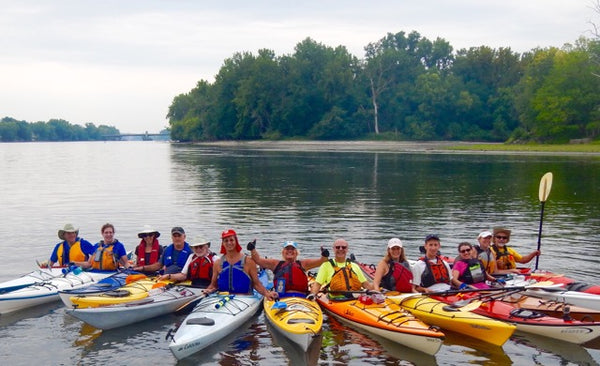
9. Tell Someone Your Paddle Route
This tip really goes without saying, tell someone your paddle plan. Make sure when informing someone of your plan, this includes: your route and where you are going, what you will be doing, how long you expect to be gone and how many people are in your party. Then make sure you stick to your plan. Should you slightly vary your plan, it's best to inform someone.
We don't like to think the worst, but should you find the need to be rescued and you've changed your plan, it can be quite a terrifying time. It goes without saying that if you give the wrong information, rescue teams will find it a lot harder to find you.
10. Water and First Aid
Our last tip is basically a few smaller tips formed together to make an all-rounder. It's a good idea to stay hydrated. We all know being out on the water is thirsty work, so it's a good idea to make sure you carry a lot of liquids. That being said, it's not a great idea to mix alcohol and kayaking. It might seem like a nice relaxing thing to do, but if you find your self capsizing after a few beers, it might not be that easy to get back in or to remain calm.
Make sure yourself, or someone on your trip knows first aid. A basic level of first aid can turn a situation that could become worse, into an easy fix. It might be a good idea to look into a first aid course if you plan on taking part in multiple trips in a short space of time. It will help you to learn to not panic in certain situations and what to do in an emergency.
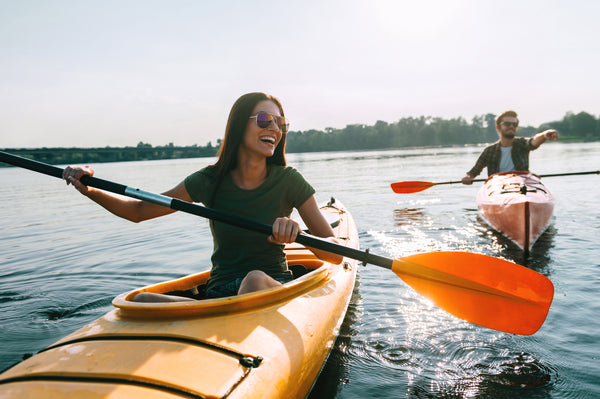
Conclusion on kayaking safety
So those are our top 10 tips for kayaking safety. Here at Bay Sports, we all hope everyone has a fun time out on the water. Following these guidelines can just help you and the people you're paddling with. We highly recommend you take the free online Paddle Sports Safety Course on Maritime NSW website here.
Remember, It is important to check conditions such as weather and tides before going out in your kayak. Whether you are going on a multi-day excursion or just paddling for an afternoon, being aware of current conditions can help you plan a more safe and efficient trip... And also remember to have fun!
Want to see what is available for your kayaking adventures?
- Click here to shop kayaking life jackets
- Click here to shop range of kayaking accessories

